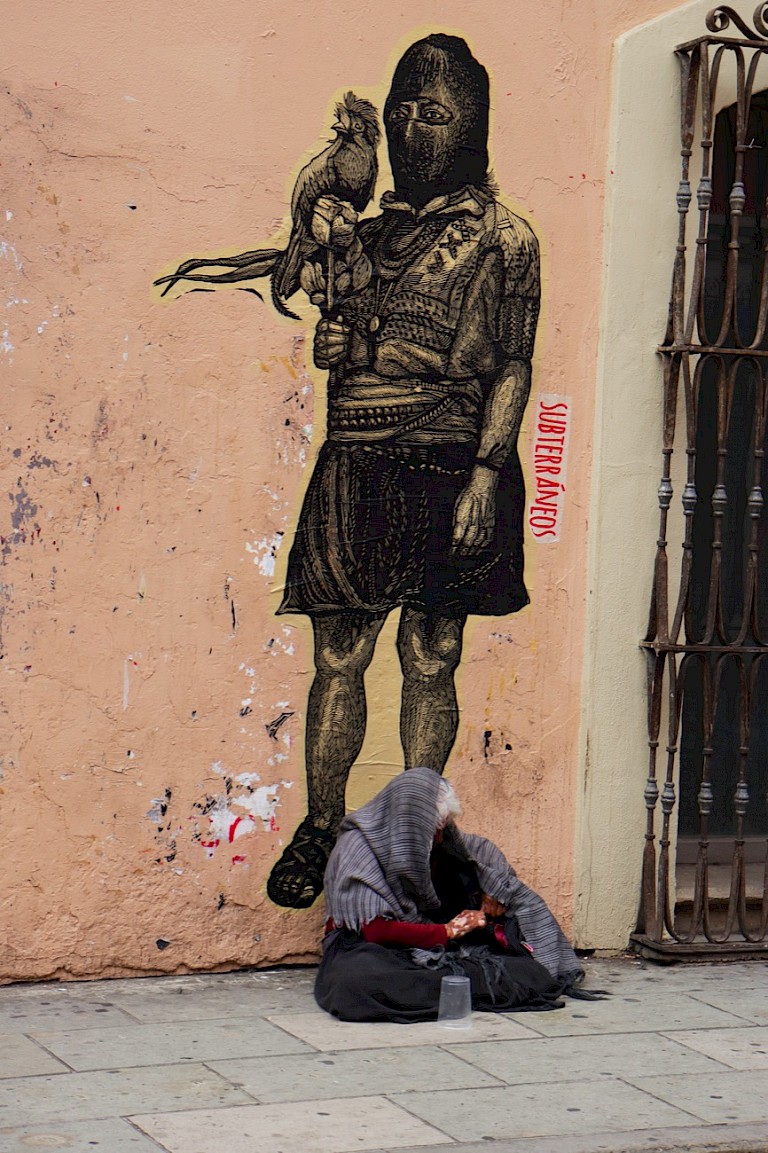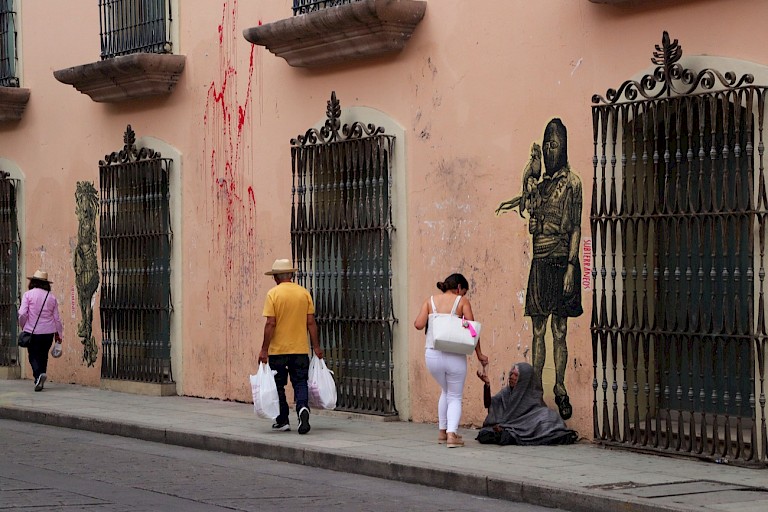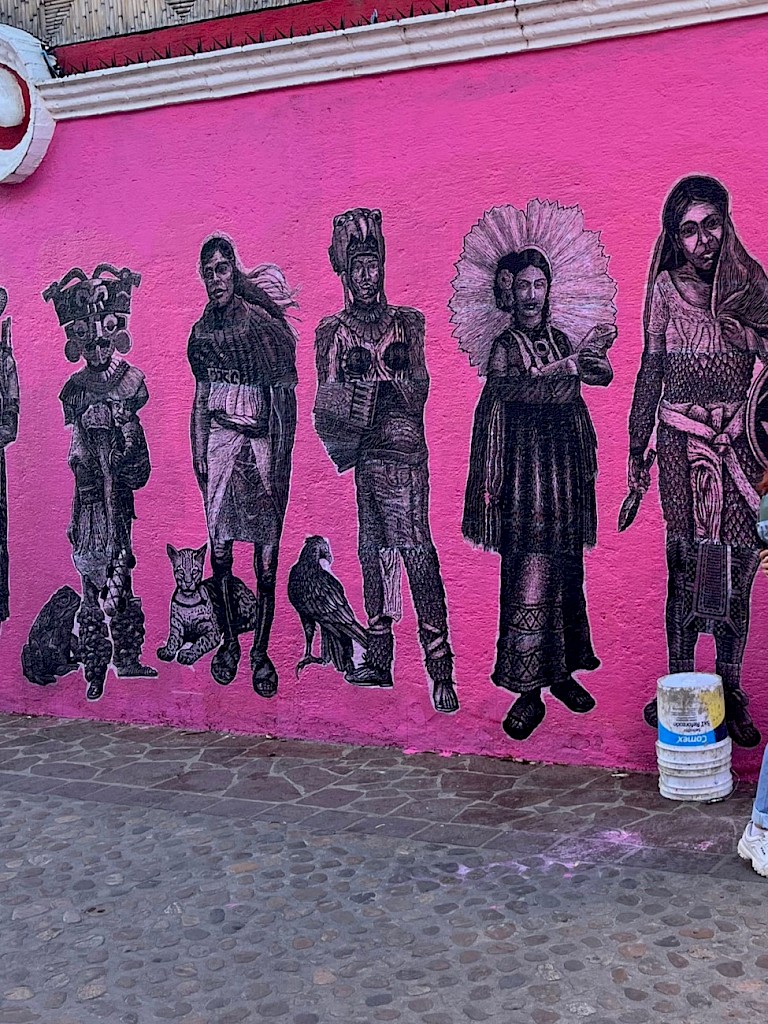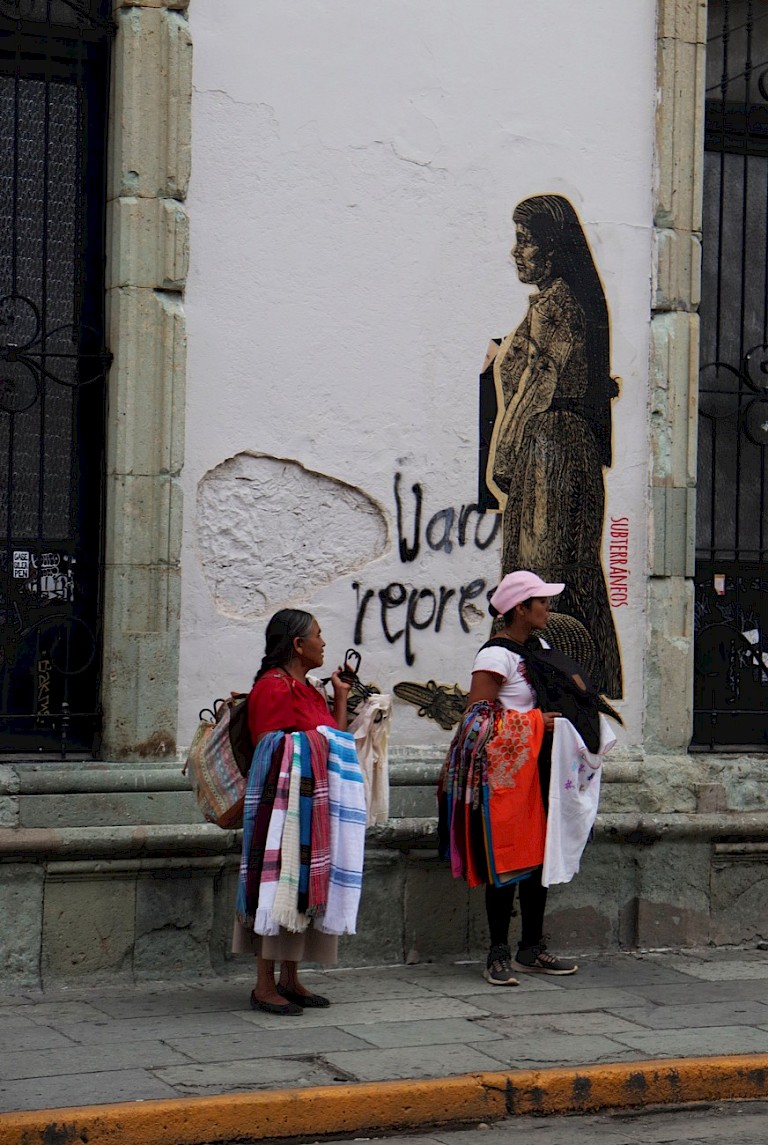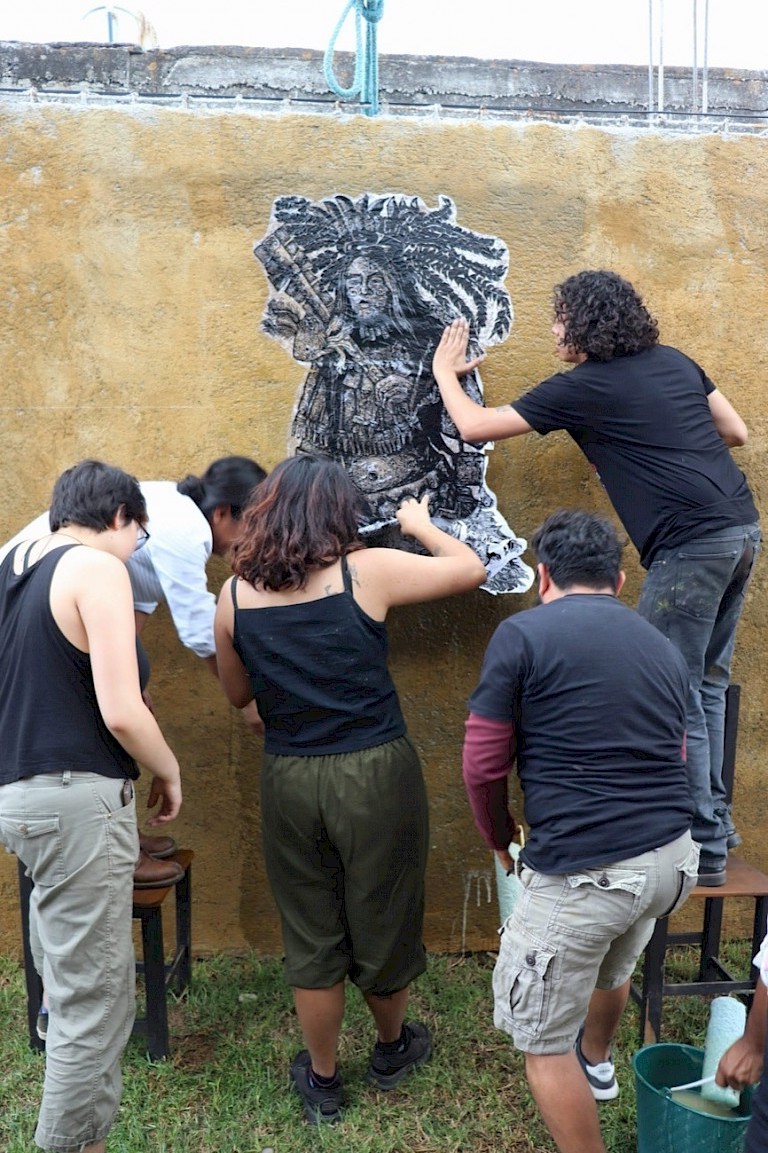



The work of the Subterraneo collective is inspired by a history and unfolding process of graphics in Oaxaca and across Mexico. Such work emerged during the 1940s, the time of The Taller de Gráfica Popular (TGP). This is considered to be the "golden era of graphics in Mexico." Other figures of influence from Mexican muralism were David Alfaro Siqueiros, José Clemente Orozco, and Diego Rivera. Based on these influences, Subterraneo seeks, through art and intervention in public spaces, to make visible issues of social content, which allow viewers to become aware of them.
Subterraneo cite the Popular Magisterial Movement that occurred in Oaxaca during 2006, which, over the years, has emerged as a historical watershed in terms of artistic creation, in graphics since that time.
This work has a fundamental role within urban art, as a cultural expression that seeks to vindicate, through the appropriation of public spaces, the link between the different realities that confront an artist; the humanisation of the artist's own context, highlighting the social value of the art.
Subterraneo create images that contain figures from the popular Mexican imagination, as well as characters of indigenous affiliation: jaguar warriors, street vendors, individuals wearing traditional and ceremonial headdresses and clothing; historical figures such as Emiliano Zapata or local figures such as Tehuanas and peasants. In this way, the collective appropriates public space to commemorate and pay tribute to characters from popular folklore, and also minority and historically marginalised social groups.
The collaborative process begins with the choice of a topic, observing it from different perspectives, soaking up information, and receiving advice from economists, philosophers, historians and teachers.
In terms of technique, Subterraneo also invite artists and groups with mastery in their own disciplines to discuss and teach about their own process, and to advise on executing work in their vein.
Subterraneo also have members with professional training whose experience lend itself to the group's work, such as; designers, educators, communicators, psychologists, and sociologists.
Images in Subterraneo works are intended to be direct and concise, while having elements that the local and external public can decode; generating semiotics and meaning of the piece, and thus creating an opportunity for reflection on the current context.
The Subterráneos model is community self-management, which is where all phases of the process are based, from the idea to realisation through financing, communication and production. Subterráneos have a common goal, where each member contributes with participatory action, teamwork, solidarity, cooperation, mutual support, and community work. The local context is the driver of Subterráneos artistic proposal that generates this creative process, whose objective is and will be social transformation.
In this way, the collective's projects begin from of different local, national and global problems raised by the communities or groups in the area where the work will reside. The choice of the topic is carried out in debate by assembly, which gives way to a majority election. In advance, Subterráneos has worked to obtain the necessary financing.
Financial support is achieved through the sale of designs that are generated for the collective. It should be noted that the member artists who create and execute the piece contribute a percentage of the sale of that work to the collective, since the collective provides all the material, tools, as well as logistics of printing, digitisation, editing, and marketing.
Other finance for projects is brought in through workshops delivered to people interested in Subterráneos techniques. In addition the group receives monetary donations, or material in kind for commerce. Another method of funding comes through carrying out interventions or murals for individuals where all members of a group participate.
Once Subterráneos have completed the images for the different projects, the works are digitised for a portfolio for documentation, and to show to future possible commissioners and groups.
Executing street interventions has allowed Subterráneos to work with different sectors of the population; eg. teachers, neighbourhoods, markets, and private properties on the outskirts. Each separate sector worked with results in different interventions and murals about particular internal contexts, and different struggles, at local and national levels. The citizens from the sector and communities then become the caretakers, making the works part of their culture, vision and thinking.
Interventions in the streets are the most important form of dissemination of the artistic work, since the purpose is to take over public spaces, where ordinary people pass and bring art closer to the general public, where it can be encountered.
Once the work is in context on the street, it interacts with the architecture, the geographical area, other urban interventions, and with the daily social routine. It creates a particular environment that welcomes, shelters, and exalts the work. The impact of real size human works, is like no other. the experience of these works can be described as “face to face” or something similar to finding a person looking at you; observing.
Throughout the life of Subterráneos, it has innovated and generated increasingly complex proposals, both from technical and theoretical perspectives. This has lead to the development of a popular school for children from different communities and regions of the state. The school often deals with young people in their first experience of studying art, offering study circles and a range os subjects related to various strands of the thinking and work Subterráneos draw from. This has allowed Subterráneos to work with artists, spaces, and groups from different countries and continents, while presenting their model to those who will bring the Subterráneos methods back to their own places of origin.
Due to the large number of works and a high level of recognition, many people seek to learn Subterráneos techniques for monumental graphics - and the requirements that support the work, including; technical process and formulas, forms of management, financing and logistics, etc. Though largely young, there is a wide spectrum of age groups involved. In Mexico, several states have adopted the model, focusing on technical processes and material. Other places include; Colombia (Amapola collective), Chile, Peru, and Argentina.
